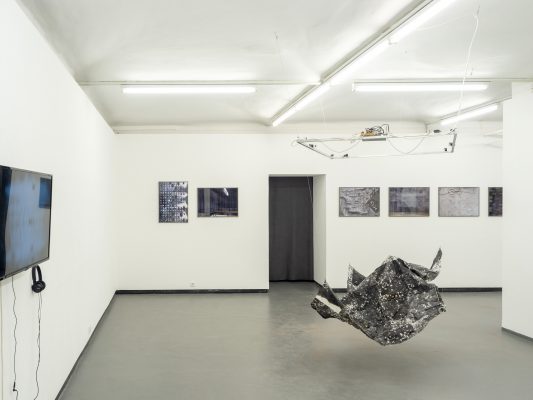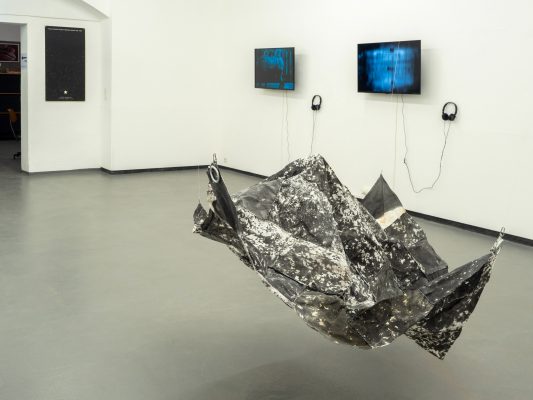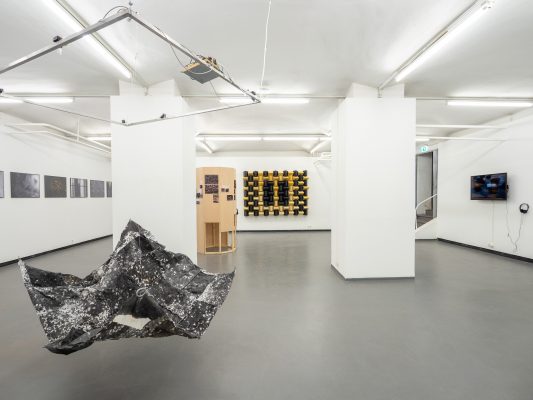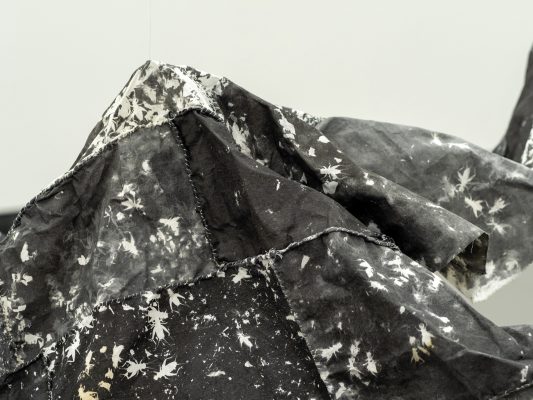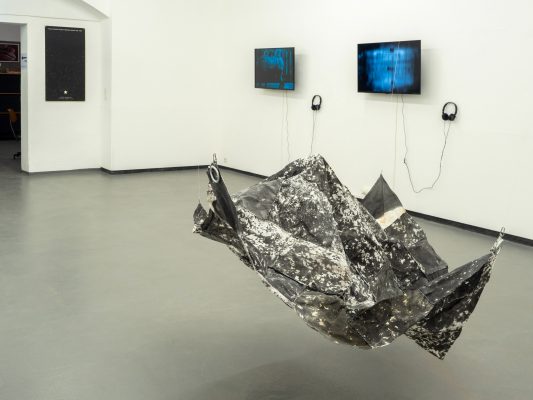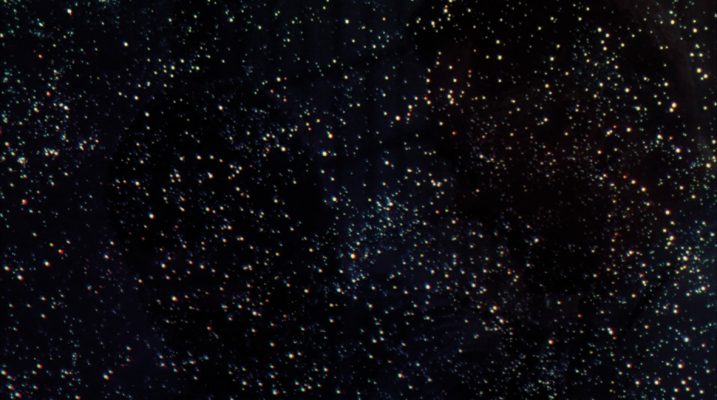Opening: Monday, 30 August, 7 p.m.
Introductory words: Petra Noll-Hammerstiel
sponsored by: BMKOES; MA7-Kultur; Cyberlab
Future Music is a literal translation from German and is usually used in a metaphorical sense for plans which are to be realised in the future. For this exhibition works were selected that deal with images and sound as an audio-visual whole or integrated interplay, and which are based on differing content inside a visionary field. The musical compositions and sounds, such as noises made by natural phenomena or animals, occur in the works of art as equal partners to the image. They stimulate, supplement, exaggerate, stand in contrast to, or call for, each other. The photographic works too are either combined with sound or can trigger associative sounds in the mind.
Hearing sound leads to changes in the reception of images, just as looking at images influences the perception of accompanying sound. The works are developed conceptually: the involvement with time and space as well as structure, order, rhythm and the sequence of events have critical roles to play as the images and sounds interrogate, reflect and transgress their own spatial and temporal domains. On the one hand, the montages of images and sound evoke a feeling of harmony through their aesthetic and atmospheric appearance as well as through their immersive character. On the other hand, however, this atmosphere can be ruptured at any time by dystopian, threatening, surreal but also absurd situations and sounds. Or else, in the case of a sound-absorbing image object, there is a complete withdrawal of sound and we attain a state of silence …
Numerous works by Patrick Baumüller are situated in the territory of sound art. Although no real sound is emitted from his object titled Pause, it is directly manifested in the conceptualisation of sound or sound waves. The object, with its visually integrated pause sign – that symbolises the temporary stop in recording or playing – consists of an agglomeration of foam pyramids that, from a purely visual point of view, are reminiscent of the sound-absorbing panels used as broad-band absorbers in sound studios. So this is the reversal of the reduction or complete disappearance of sound. In the change of medium – as here from sound to object – Baumüller creates symbolically charged concentrates.
The concern in Karø Goldt’s experimental photo-film, hortus, is with the way we deal with nature and agriculture and the consequences of that. For over a year Goldt photographed flowerbeds and plants in her garden and observed their changing colours. Thereafter she reduced the photographs to their colours and animated these strips of photos to small video clips, which move within spectrometer analytical matrices. The second part of the film shows how it might look when, after the destruction of the environment, the last evidence from a garden is scientifically examined. Music by Timothy Shearer accentuates the aesthetics and atmosphere of the film towards the sombre and dystopian. The works in the photo series, unimagined possibilities, fluctuate between utopia and dystopia and, with their partly spherical atmosphere, a sonic level is palpable.
Kaja Clara Joo’s Schwarmorchester installation derives from the image of a blindly writhing swarm of crickets. A number of emulsion works are to be found on a cotton blanket that hangs on an aluminium frame: A Petri dish was fixed in a photo enlarger in the darkroom in which there was a live cricket swarm in place of a negative. The movements of the insects could be influenced and directed by using temperature, vibration and light. Their behaviour was registered by exposing it on individual pieces of cotton fabric that had previously by rendered sensitive to light. The use of motors imparts movement to the entire body, which is only completed by those: The sculpture vibrates and resonates in its frame like the quiet chirping of a swarm.
The film, ★, by Johann Lurf shows the star-studded firmaments of film history, chronologically ordered from the beginnings of cinema up to the present. This is accompanied by the original sound of the individual scenes. The acoustic level conveys a multiplicity of information – from changes in language, the composition of music and sound design through to the sound systems used over the last 120 years. Because of the focus on clear starry skies in the selection of the scenes, the film exhibits both rhythm and fragmentation through its cuts. The multiple off-screen voices philosophise and dream in their respective languages as they gaze into space which, according to the decade and prevalent trend, also changes visually. The current version, from 2021, will be shown.
Walter Mirtl is showing a selection of current videos most of which have self-composed soundtracks. In these short videos, his preferred art medium for many years, the visual and audio material are of equal importance and meld to a synthesis. The image information is of extremely short duration and looped while the soundtrack runs through the whole video. Only rarely is this the other way around. Usually two pictures from two different contexts are combined, replacing each other either by abrupt cuts or rapid cross-fades. Mirtl depicts states and events with which he wants to stimulate sensory impressions. Together with the often threatening, repetitive soundtrack surreal and enigmatic situations are created. As in a musical score he uses a vertical organisation of image levels and sound levels.
Laura Wagner documents the performance Leverkühn with photos and sound, when 600 snails played a concert on a discarded grand piano. As the animals glide over the keys, the rusty wires and the decomposing wooden frame, the piano from the Sofiensäle performatively indicates its own temporality. It points to the history of the halls where, in an ear-splitting silence, operettas and balls took place shortly after their use as a collection point for Jews just prior to their deportation. In the performative installation this is played once more, but this time by a snail collective that unites into a living biomorphic mass and takes over the mnemonic piano in a process that is almost metabolic (Magdalena Stöger).
Curated by Petra Noll-Hammerstiel and Michael Michlmayr




